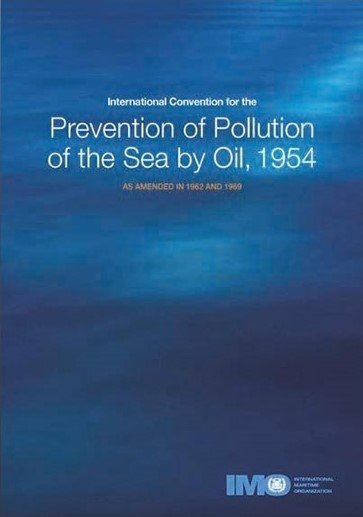The OILPOL 54 Convention (International Convention for the Prevention of Pollution of the Sea by Oil), adopted in London on May 12, 1954, was the first international treaty dedicated to tackling oil pollution in the oceans, marking a milestone in marine environmental protection.
This groundbreaking agreement introduced strict regulations to control the discharge of oil and oily mixtures from ships. A key requirement was the Oil Record Book, which all vessels had to maintain to log ballast operations and oil discharges. This log served as a regulatory tool for the flag state to inspect and enforce compliance.
OILPOL 54 recognized the severe environmental harm caused by routine shipboard operations like cleaning cargo tanks, which often released oily wastes into the sea. To mitigate this, the Convention prohibited discharges within certain distances from shore and in designated ‘special areas’—regions identified for their ecological sensitivity. These areas received enhanced protection, with discharge restrictions tailored to their unique environmental risks, rather than applying a fixed global standard.
In summary, OILPOL 54 was a pioneering step in regulating marine pollution, establishing international norms that acknowledged both the operational realities of shipping and the urgent need to protect vulnerable marine ecosystems.

Here are 14 questions designed for maritime academy students that cover a range of topics related to the OILPOL 54 Convention, and subsequent maritime environmental protection conventions:
- What were the main objectives of the OILPOL 54 Convention, and how did they address the issue of oil pollution at sea?
- The OILPOL 54 Convention prohibited the discharge of oil and oily mixtures from ships into the sea within how many miles from the nearest land?
- A. 50 miles
- B. 100 miles
- C. 150 miles
- D. It varied depending on the area
- The OILPOL Convention allowed for unlimited discharge of oil waste in ‘special areas’ due to their robust ecosystems. True/False?
- Describe how the Torrey Canyon disaster influenced the development of international maritime environmental laws.
- What does the Oil Record Book, as mandated by OILPOL 54, include?
- A. Only the record of oil discharges
- B. Records of ballast and oil discharges
- C. A log of crew members’ activities
- D. Detailed maps of oil tanker routes
- The enforcement of the OILPOL 54 Convention was the responsibility of the port state control authorities.
- How has the role of the International Maritime Organization (IMO) evolved since the adoption of OILPOL 54?
- Which event was primarily responsible for accelerating the formation of the MARPOL convention?
- A. The sinking of the Titanic
- B. The grounding of the Exxon Valdez
- C. The Torrey Canyon oil spill
- D. The Oceanic Grandeur oil spill
- MARPOL was established before the OILPOL 54 Convention. True/False?
- In what ways did MARPOL expand upon the environmental protections offered by OILPOL?
- The OILPOL 54 Convention was updated in which of the following years?
- A. 1960
- B. 1962
- C. 1969
- D. All of the above
- Under OILPOL 54, ballast discharges by oil tankers were strictly regulated and had to be recorded. True/False?
- Explain why international cooperation is essential in the enforcement of conventions like OILPOL and MARPOL.
- The OILPOL 54 Convention required vessels to maintain an Oil Record Book. What was the primary purpose of this requirement?
- A. To document the ship’s travel itinerary
- B. To maintain a record of personnel on board
- C. To log ballast and oil discharges and ensure compliance with regulations
- D. To track the ship’s fuel consumption for economic analysis


thank you